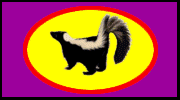
|

|

|
Fescue Lawn Care
Paul Burns, Garden Design & Education©
Fescue makes a great lawn. It is thick and lush during the fall, winter, and spring. It is shade tolerant and is ideally suited for wooded lots that have mixed patches of sun and shade throughout the day. Its most popular feature is the ease and low cost of establishing this lawn from seed. Its chief drawback is that it as a cool season grass it doesn't like our summers. It looks its worst during a hot, dry summer.
Renovation
If you have inherited a fescue lawn that has seen better days, there are several steps you can take to restore the vigor of your fescue lawn.
Aerate: Rent a core-aerating machine and run it back and forth over your damp lawn to loosen the soil by pulling out 3" by 1/2" plugs of soil. The soil in these plugs will breakup and refill the holes with loose soil. This will allow rain to penetrate and be absorbed, and will allow the roots to spread into the loose soil for stronger roots. This should be done before each re-seeding.
Lime: Dolomitic limestone adds the essential elements calcium and magnesium to the soil, while raising the pH to an alkaline level preferred by grasses. A soil sample taken to your county extension agent gives you an accurate amount of lime to add to your soil, but as a general rule, you need to add 40 pounds (one bag) of lime to 1000 sq.ft. of lawn the first time you treat it, and add an additional 20 pounds (1/2 bag) per 1000 sq.ft. each year.
Fertilizer: Lawns need fed three times a year with a good fertilizer to maintain that rich green color, and to keep it strong and healthy. Use a good fertilizer with slow-release nitrogen, phosphorus, potassium and trace elements like copper, zinc, and iron to prevent nutritional deficiencies. Fescue is usually fertilized in September or October, January or February, and in April or May.
Seeding: Thicken up the stand of grass by spreading fescue seed over the freshly aerated lawn, using 5 pounds of seed per 1000 sq.ft. The seed will wash into the aeration holes where it will find soft, loose soil to sprout in. Using a hybrid turf-type fescue like Rebel or Falcon will give you a finer textured and higher quality lawn than the traditional Kentucky 31. Adding creeping red fescue (3 pounds per 10 pounds of fescue) to the mix will help provide thicker grass in shady areas. If your lawn is too shady for creeping red fescue, its time to think about other options for a ground cover like mondograss, ivy, or ajuga.
Installation
To start a lawn from scratch, first kill all the existing vegetation with Round-up, and wait two weeks for the Round-up to work. Add 40 pounds (one bag) per 1000 sq.ft. of Dolomitic lime. Till the entire area to loosen the soil, adding organic matter if it is economically feasible. Rake the area smooth, removing and clods, stones, and debris. Spread 10 pounds of hybrid turf-type fescue seed on each 1000 sq.ft. Use Rebel or Falcon in sunny lawns, and Rebel, Falcon, and creeping red fescue in shady spots. Fertilize with a commercial seed starter fertilizer ( 1 bag per 5000 sq.ft.). Spread a bale of wheat straw on each 1000 sq.ft. to help retain moisture. Water thoroughly when done, then water lightly once or twice a day to keep the seed moist enough for germination. The seed will take 2 to 3 weeks to germinate. Once the grass is up, slowly taper back the waterings until the lawn is receiving a weekly soaking. When you begin to mow the lawn, the straw is chopped up by your mower.
Since fescue can take 3 weeks to germinate and annual rye only takes a week, many people add a little annual rye seed (1 pound per 10 pounds of fescue) to their fescue seed. This quick sprouting grass will help to hold the straw on slopes for erosion control, and can give you quick feedback on germination.
Maintenance
Once your lawn is established, you can keep it growing healthy and vigorous with proper maintenance.
Cutting: Cut your fescue 2 1/2" tall. During the summer you can cut it at 3" for drought protection. You can leave the clipping as long as you are cutting often enough to be removing 1/2". Always use a sharp mower blade.
Lime: Add 20 pounds of dolomitic lime per 1000 sq. ft. each year (or whatever your soil sample recommends).
Fertilization: Fertilize three times a year (September/October, January/February, and April) with a quality fertilizer that provides slow-release nitrogen, phosphorus, potassium and trace elements like copper, zinc, and iron to prevent nutritional deficiencies.
Aerate: Aerating annually in the fall helps fight compaction and improves drainage and root growth. Professional lawn care companies and golf courses aerate religiously. This is one reason they have great looking grass.
Reseeding: Overseeding in the fall will help thicken the stand of fescue, and fill in any bald patches that develop during the summer. Overseeding is most successful on freshly aerated lawns. Use 4 - 5 pounds of seed per 1000 sq.ft.
Weed Control
Most chemical weed control is incompatible with reseeding fescue. It is important to coordinate any weed control with your reseeding schedule. Ortho's Weed-B-Gon for Southern Lawns will kill most broad-leaved weeds without hurting fescue. You have to wait 6 weeks after applying Weed-B-Gon before reseeding, so August 1st should be the last date of application if you are going to reseed in late September or early October. You need to wait 6-8 weeks after seed germination before using Weed-B-Gon on young fescue.
Round-up can be used on persistent weeds 2 weeks before reseeding. It will kill any fescue that is sprayed, but that will not matter if you are reseeding anyway.
Pre-emergent herbicides, like Dacthal and Balan, can be used to prevent crabgrass in the spring. Since they interfere with seed germination, using a pre-emergent will prevent you from reseeding in the spring.
Paul Burns, Garden Design & Education
1996-2005©
 |
Paul Burns Atlanta, Georgia, USA |

Don't Tread on Me! |